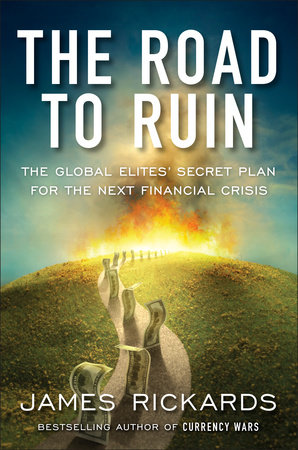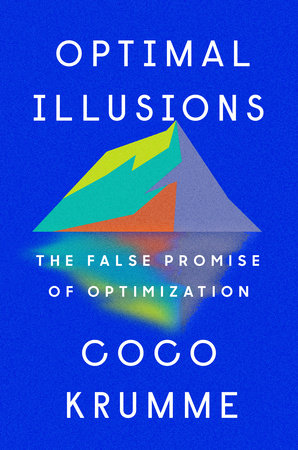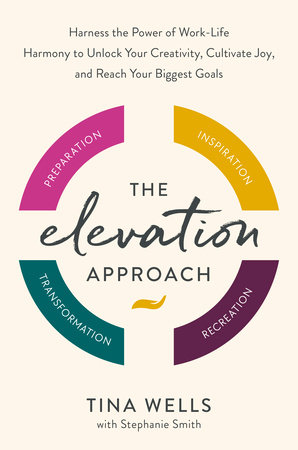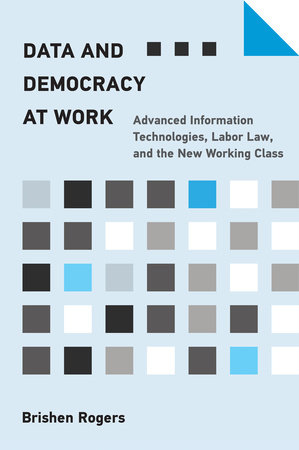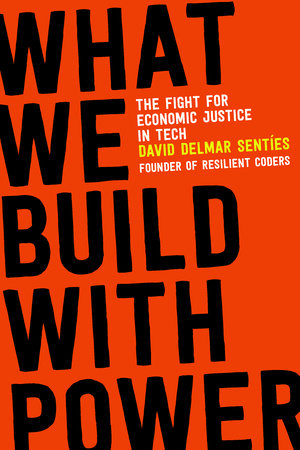Quick Summary
One sentence summary
“The Road to Ruin” by James Rickards presents a stark outlook on the global financial system, predicting its inevitable collapse due to poor policy choices and the mismanagement of money.
Big idea
Rickards argues that the global economy is on a path to a catastrophic failure, one that central banks and governments are ill-prepared to handle, due to their reliance on outdated models and a misunderstanding of the complexity within financial systems.
Five key ideas
- The Inevitability of a Financial Crisis: Rickards believes a financial crisis larger than 2008 is looming, driven by systemic vulnerabilities and the interconnectedness of global financial institutions.
- The Flaws in Economic Modeling: Current economic models fail to account for complexity and human behavior, leading policymakers to rely on false assumptions.
- The Role of Gold: Gold is emphasized as a critical hedge against future financial collapse, with Rickards advocating for its increased role in personal and national reserves.
- The Ice-Nine Plan: The book outlines a chilling “Ice-Nine” plan, where governments freeze assets to prevent a financial meltdown, trapping wealth within a failing system.
- The Illusion of Wealth: There’s an illusion of wealth in the current financial system, exacerbated by the creation of money through quantitative easing, which masks underlying weaknesses.
Actionable advice
To safeguard against the predicted financial turmoil, Rickards advises diversifying assets, investing in tangible goods like gold, land, and fine art, and staying informed about the economic policies and global events that influence the market.
About the author
James Rickards is a financial expert, economist, and author, known for his previous works such as “Currency Wars” and “The Death of Money,” which also delve into the complexities of the global financial system and the potential for economic downturns.
Read next
For those interested in expanding their understanding of economics and financial crises, consider reading “Currency Wars,” also by James Rickards, which explores the competitive devaluation of currencies. Another pertinent read is “This Time Is Different” by Carmen Reinhart and Kenneth Rogoff, which examines financial crises throughout history. For a different perspective on wealth and its influence, “Capital in the Twenty-First Century” by Thomas Piketty offers an extensive analysis of wealth inequality and its impact on society.
In Depth
The Inevitability of a Financial Crisis
The bedrock of Rickards’ thesis in “The Road to Ruin” is not just that a financial crisis is possible—it’s that it’s inevitable. He sees the financial system as a house of cards, with each card representing financial instruments interconnected in such a complex way that the fall of one could bring down the entire structure.
Rickards doesn’t just theorize; he points to concrete examples that foreshadow this downfall. He looks at the 2008 financial crisis and explains how the measures taken to recover from it didn’t address the systemic issues but merely plastered over the cracks. For instance, he scrutinizes how the bailout of major banks, instead of allowing inefficient institutions to fail and be restructured, actually preserved these systemic risks.
A detailed example Rickards provides is the case of Long-Term Capital Management (LTCM), the hedge fund that collapsed in 1998, which he was involved in as a negotiator. LTCM’s failure was a result of a combination of high leverage and lack of liquidity, both of which are even more prevalent in today’s market. He argues that the global economy has become more susceptible to this type of failure due to increased leverage, derivative exposure, and the shadow banking system, which operates outside of regulatory oversight.
One of Rickards’ most compelling quotes is:
“The next financial collapse will resemble nothing in history… Deciding ahead of time what this or that piece of furniture will go for at a weekend tag sale is not true preparation. The only plan that will matter is the plan the government has, and that plan does not include you.”
This quote encapsulates the crux of the first key idea; it’s not just that a crisis is coming—it’s that the average person is not part of the government’s contingency plan. It’s a dire warning that what we see as stable and secure—the financial institutions and markets—can be abruptly transformed into locked doors and frozen assets.
Rickards stresses that the financial crisis will be so pervasive that traditional means of protection, like diversifying assets or hedging bets, may not be enough. This isn’t about the failure of a single institution or even a single market—it’s about a systemic crisis that can engulf multiple economies. He argues that most people are woefully unprepared for such a scenario, both in terms of their investment portfolios and their understanding of the fragility of the financial system.
In framing the inevitability of a financial crisis, Rickards urges readers to look beyond conventional financial wisdom and to understand that the stability of the past does not guarantee the security of the future. He encourages people to become more financially literate, to understand the signs of an impending crisis, and to take actions that can safeguard their wealth when traditional systems fail. This idea isn’t just an academic argument but a call to action for anyone with a stake in the global economy.
The Flaws in Economic Modeling
James Rickards tackles the critical issue of economic modeling head-on, arguing that the models used by policymakers and financial experts are not just flawed, but dangerously misleading. These models often make simplistic assumptions about complex systems, failing to capture the intricate interdependencies of global markets. They assume linearity in a world that is inherently nonlinear.
A central piece of evidence Rickards presents is the reliance on the Gaussian copula model prior to the 2008 crisis. This mathematical formula was used to price a vast array of financial securities, including the now-infamous collateralized debt obligations (CDOs). It was predicated on the belief that the correlations in market movements were stable and could be captured by a simple mathematical function. When the crisis hit, these correlations broke down, and the model’s predictions were disastrously wrong, leading to massive losses for institutions that believed in the model’s infallibility.
Rickards sharply criticizes the blind faith in such models with a poignant quote:
“When it comes to risk, euphoria and complacency are our worst enemies. When the herd is all on one side of the ship, it’s bound to capsize.”
This quote illustrates the danger of a one-size-fits-all approach to risk management. By depending on flawed models, the financial world is effectively ‘on one side of the ship,’ ignoring the brewing storm that could flip it over.
He suggests that rather than these reductionist models, what’s needed are more holistic approaches that take into account the behavioral aspects of market participants, the possibility of ‘black swan’ events, and the non-linear dynamics of financial markets. In this regard, he critiques the over-reliance on models such as the Black-Scholes option pricing model and the Value at Risk (VaR) model for not incorporating these vital elements of unpredictability and human behavior.
Moreover, Rickards doesn’t just point out the flaws; he also emphasizes the human element that is often disregarded. He draws attention to the fact that behind every trade, every economic decision, there are people with their own biases, fears, and irrational behaviors. Traditional models assume rationality, but markets are driven by humans who are anything but always rational.
To drive his point home, Rickards leads us into a deeper understanding of complexity theory and its application to financial markets. He shows how complexity theory offers a framework for understanding the financial system as a complex adaptive system, capable of unexpected behavior as a result of the interactions among its many agents.
The take-home message is clear: our economic systems are more akin to ecosystems than machines, and any attempt to predict their behavior must take into account the unpredictability of the environment and the creatures within it. It’s a call to shift from a mechanical worldview of the economy to a more organic one, embracing complexity rather than trying to oversimplify it.
The Role of Gold
In “The Road to Ruin,” James Rickards doesn’t just foresee a collapse of the current financial system; he also offers gold as a critical lifeboat for this economic Titanic. Gold, according to Rickards, isn’t just another commodity—it’s a form of money that has stood the test of time, free from the whims of governments and the volatility of markets.
He dives into a detailed example: the 2008 financial crisis. In the midst of this meltdown, while other assets plummeted, gold retained its value. Rickards highlights that, unlike fiat currencies that central banks can print at will, gold is finite. Its scarcity and physical properties have made it a trusted medium of exchange and store of value for thousands of years. He illustrates the precariousness of fiat currencies with the following quote:
“The confidence in paper money among the general population is a thin veneer that does not withstand the actual viewing of the printing process.”
This quote underscores a key point: the value of paper money is highly dependent on public confidence, which can erode swiftly in a crisis. Gold, by contrast, isn’t subject to the same risks. It can’t be printed or created out of thin air, which is why Rickards sees it as an anchor against the storm.
Rickards presses on the fact that not only individual investors but also central banks are turning to gold. He notes that in recent years, central banks have been net buyers of gold, reversing a trend of selling off reserves. This pivot underscores gold’s role as a stabilizing force and a hedge against uncertainty.
The author’s stance on gold is interwoven with a critique of quantitative easing (QE). QE, as he points out, involves the creation of large amounts of currency to purchase government securities. While this process might stabilize economies in the short term, it inflates asset bubbles and devalues currency in the long term. Gold, in Rickards’ eyes, is immune to such devaluation.
His advice to readers is both simple and profound: in a world where the value of money is a moving target, owning gold provides a measure of safety. This isn’t just about investment strategy; it’s a fundamental rethinking of what constitutes real wealth in a system fraught with invisible risks.
To hammer the point home, Rickards warns against being caught in the deception of paper wealth. He implies that in a serious financial crisis, those with gold may find themselves on the right side of a wealth transfer. As currencies wobble and financial systems crack, gold stands as a bastion of stability.
The narrative Rickards weaves is clear—gold is not an archaic relic, but a prudent allocation in a diversified portfolio, especially when the financial weather forecast calls for a potential storm. It’s not just an asset but a kind of financial insurance, a role that gold has played for centuries and one that Rickards insists it will continue to play in the future.
The Ice-Nine Plan
James Rickards introduces the concept of the Ice-Nine plan with a direct and alarming assertion: in the event of a financial collapse, governments and global institutions have a lockdown mechanism ready to deploy. This mechanism, akin to the fictional substance ‘Ice-Nine’ from Kurt Vonnegut’s “Cat’s Cradle,” would freeze the financial system to prevent a meltdown.
In “The Road to Ruin,” Rickards describes a chilling scenario where, in response to a new crisis, the world’s leaders might prevent a run on banks and a liquidity crisis by locking down the money of ordinary citizens. By halting the convertibility of assets into cash, they would stop the flow of money, thereby preventing the spread of financial panic.
Rickards gives a detailed example of this from the book by referring to the G20’s Brisbane summit in 2014. At this gathering, the seeds were sown for new protocols to be used by failing mega-banks to confiscate depositors’ funds, known as “bail-ins.” This is the practical embodiment of the Ice-Nine plan: rather than governments bailing out banks with public money, the banks would use the money already within their systems—the deposits of their customers—to stabilize themselves.
“The global elites are not your friends when it comes to preserving your capital… Ice-Nine is the ultimate lock-down… the plan is to lock down the system, confiscate wealth, and reassert control.”
The stark quote from Rickards serves as a wake-up call, pushing readers to recognize the potential for sweeping and draconian measures in times of financial crisis. It suggests that in the face of systemic risk, individuals have little control over their assets.
Rickards doesn’t just present this plan as a possibility; he considers it an almost foregone conclusion, an integral part of the system’s self-preservation mechanism. He argues that this Ice-Nine plan could be triggered because the financial system is too interconnected. The failure of one bank could lead to the rapid spread of panic and solvency issues to other banks and across the financial markets globally.
This idea isn’t merely theoretical; Rickards uses historical precedents like the Cyprus bank bail-ins of 2013, where a portion of deposit accounts was converted into equity to recapitalize the banks, as a small-scale model of what could happen worldwide.
Rickards urges the reader to understand that in this scenario, accessing one’s own assets could become impossible. Investments, savings accounts, retirement funds—all could be frozen in an attempt to prevent a cascade of financial failure.
The takeaway from this key idea is proactive caution. Rickards isn’t just sharing a prediction; he’s offering a precautionary principle. Understanding the Ice-Nine plan is about recognizing that in today’s financial system, individual wealth isn’t just personal—it’s a small part of a vast, interconnected network that may prioritize its survival over individual property rights in a crisis.
Complexity and Scaling
James Rickards puts a spotlight on a concept often overlooked in financial circles: the inherent complexity and scaling issues of our global financial system. He explains that as systems scale in size, they don’t simply grow larger, they become exponentially more complex and, as a result, exponentially riskier.
In “The Road to Ruin,” Rickards employs a detailed example concerning the 1998 collapse of Long-Term Capital Management (LTCM), a hedge fund that nearly brought down the global financial system. Rickards, having had firsthand experience with the LTCM situation, articulates how the fund’s models, which worked well when managing smaller amounts, failed catastrophically when the fund scaled to control hundreds of billions of dollars.
“The use of historical data to infer the risk of catastrophe is like driving a car by looking in the rearview mirror.”
This quote underlines the flaw in using past data to predict future financial crises. Rickards points out that traditional risk management tools assume that changes in market conditions are gradual and predictable. However, markets are a part of a complex system where changes can be sudden and extreme, defying conventional predictions.
Rickards warns that the financial markets, much like any natural system, are governed by the laws of complexity. These systems have tipping points due to their interconnectedness and the tight coupling of their components. A small trigger can lead to an outsized impact, a concept known as the “butterfly effect” in chaos theory.
The failure to understand and respect the complexity of the financial system is a recurrent theme in Rickards’ analysis of economic catastrophes. He criticizes the overreliance on models that view financial systems as linear and tameable when in reality they are dynamic and often unpredictable. This key idea speaks to the heart of why financial crises can be so severe and why they often catch experts off guard.
Rickards further explains that as the scale of financial endeavors increases, the capability to manage risk does not scale alongside it. The larger these financial structures become, the more interconnected and fragile they are, and the greater the risk of a systemic collapse. The interdependencies create a network of financial obligations that can lead to rapid and catastrophic domino effects, as witnessed during the 2008 financial crisis.
The lesson here is one of humility and caution. Rickards encourages readers, and the financial community at large, to be wary of overconfidence in our ability to control or predict such a complex system. Instead, we should be preparing for the unexpected and recognizing the limitations of our risk models.
Understanding complexity and scaling is not just an exercise in financial theory, but a practical guide to risk management and investment. It’s about realizing that in a world where everything is connected, risk can escalate quickly and in ways that are not immediately obvious. This understanding can be the difference between weathering a storm and being swept away by it.
Actionable Advice
- Diversify Beyond Traditional Assets: Don’t just stick to stocks and bonds. Consider alternative assets like real estate, commodities, and especially gold, to safeguard your wealth.
- Hold Some Cash: Cash provides a buffer in crises. It offers liquidity when other assets freeze and gives you purchasing power when opportunities arise.
- Be Wary of Digital Wealth: Understand the risks of purely digital assets. In a lockdown scenario, physical assets can be more reliable.
- Educate Yourself on Financial Protection: Learn about financial safe havens and personal finance laws, especially regarding bail-ins and how they might affect your deposits.
- Cultivate Financial Awareness: Keep abreast of global economic policies and how they might impact the financial markets. Awareness is key to being prepared.
- Embrace Complexity: Acknowledge the complexity of the financial system. Be skeptical of anyone who claims they can predict markets with certainty.
- Stay Adaptable: Be ready to adapt your financial strategies as global economic conditions change. Flexibility can be a significant asset in uncertain times.
- Build a Crisis Toolkit: Have a plan for how to respond to economic turmoil, whether that’s having assets in different jurisdictions or knowing when to exit markets.
- Network with Like-Minded Individuals: Exchange ideas with those who also understand the risks of the current financial system. There’s strength in numbers and shared knowledge.
About the Author
James Rickards is a financial expert, economist, and writer with a legal background. He’s a New York Times bestselling author, with titles like “Currency Wars” and “The New Case for Gold” under his belt, showcasing his expertise in financial crises and monetary policy. His career spans various roles: from Wall Street veteran to advisor for the Defense Department. Rickards holds a keen interest in the mechanics of gold as money and has been a vocal critic of modern monetary theory and practices. He’s known for predicting the 2008 financial crisis, contributing to his reputation as a maverick in economic forecasting. His work displays a deep distrust of the current fiat-based monetary system, advocating instead for a return to a gold standard or similar model. He’s a frequent speaker at financial seminars and often appears as a media commentator, sharing his sharp insights on economic trends and their implications on global stability. Through his books and speeches, Rickards spreads his vision for a more resilient financial system, emphasizing the need for individual preparedness in the face of economic uncertainty.
Read These Next
You might like these similar books
- “Currency Wars” by James Rickards
- “The New Case for Gold” by James Rickards
- “The Death of Money” by James Rickards
- “Aftermath: Seven Secrets of Wealth Preservation in the Coming Chaos” by James Rickards
- “The Big Drop: How to Grow Your Wealth During the Coming Collapse” by James Rickards
FAQ
Q: What is ‘The Road to Ruin’ about?
A: ‘The Road to Ruin’ by James Rickards is about the potential for a future financial crisis, the strategies that governments could use to respond, and how individuals can prepare for such an event.
Q: Who would benefit from reading this book?
A: Investors, financial professionals, and anyone interested in understanding the complexities of the global financial system and how to safeguard their wealth would benefit from this book.
Q: Does ‘The Road to Ruin’ offer investment advice?
A: Yes, the book provides insights into asset diversification, risk management, and strategies for protecting wealth.
Q: Is ‘The Road to Ruin’ based on speculation or fact?
A: The book is a combination of financial analysis, historical facts, and Rickards’ predictions based on his expertise in financial markets and economic policy.
Q: How does James Rickards support his claims in the book?
A: Rickards uses historical financial crises, personal experiences, and his knowledge of economic theory to support his claims and predictions.
Q: Can ‘The Road to Ruin’ be understood by those without a financial background?
A: Yes, Rickards writes in a way that makes complex financial concepts accessible to readers without a financial background.

